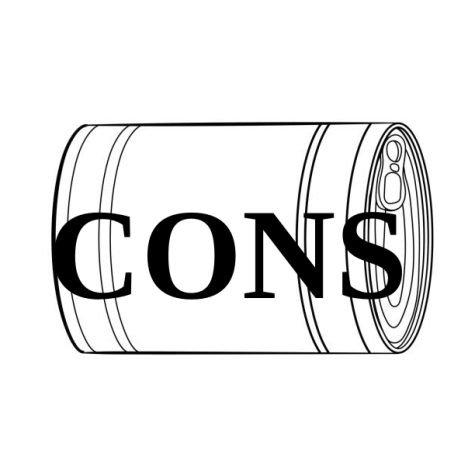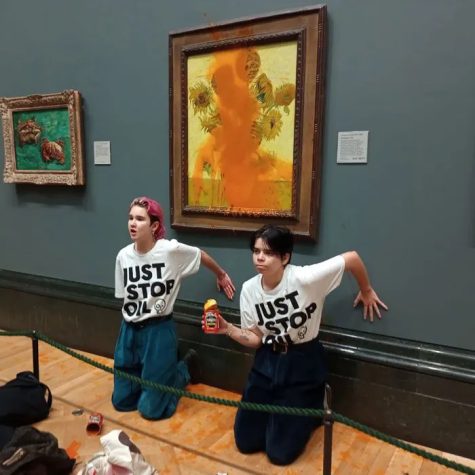Soup-throwing activism: effective or pointless?
January 6, 2023

Vincent Van Gogh’s painting “Sunflowers” was painted in 1888, predating the oil cost crisis of 2022 by 132 years. Still, climate activists around the world felt the need to bring the unrelated art piece into a fight they have no relation to.
One example of these instances was in the National Gallery of Art in London, when activists from the organization Just Stop Oil threw cans of tomato soup on “Sunflower” in an attempt to protest fossil fuel production and prices and the resulting living crisis.
Instead of actually serving to promote the cause of these climate activist’s, their ineffective form of protest is striking debate about the ethical and moral undertones of their actions.
“Culture, which is a key part of our identity, should be defended and protected and not used as a megaphone for other forms of protest,” Italy’s Culture Minister Gennaro Sangiuliano said in a statement after another climate advocacy group threw soup on a Van Gogh painting in Rome. Tearing down culture in an attempt to spotlight a humanitarian issue is paradoxical, marring a critical aspect of life in order to explain why life must be preserved.
Furthermore, climate organizations such as Just Stop Oil claim that they are not seeking public approval and don’t feel the need to be liked, however being negatively perceived as a result of their soup throwing tendencies diminishes their reputability and therefore their ability to actually invoke change.
“I’m terrified I’m going to be denied the right to grow old,” Just Stop Oil activist Phoebe Plummer said in an interview with Yahoo News. “I’m terrified I’m going to live in constant fear of climate disaster.”
While Plummer’s fear is valid, her counterproductive protest has done little more than inspire resentment towards the organization. Those in power may be more hesitant to help a group so conceited they feel they are justified in committing acts of vandalism to gain traction for their cause. While the organization is seemingly unconcerned, negative public perception may heavily influence outside organization’s inclination to help.
In an interview with the Associated Press, climate scientist Michael Mann said the act “alienates many people we need to bring into the fold. People who are natural allies in the climate battle but will draw negative associations with climate advocacy and activism from such acts.”


The activists are undeterred despite the immense backlash they received. The public has pushed back against their protest, calling out the cultural implications, absurdity of their actions, and the disregard for the painting. But this has not bothered them, because none of this is what the protest was about. To them it was about being seen. To do this, the activists chose Van Gogh’s “Sunflowers” not as a personal attack against the artist or his culture, but simply due to its notoriety. They also intentionally picked a painting with glass over so as not to cause it any harm.
“We’re not asking the question, should everyone be throwing soup at paintings?” Phoebe Plummer, one of the activists, said in an interview with NPR. “What we’re doing is getting the conversation going so we can ask the questions that matter.”
They wanted publicity, and got it. The video of Plummer and Holland throwing the tomato soup has over 50 million views on Twitter. Articles abound discussing their actions, and Plummer has been interviewed by NPR, Reuters and Valuetainment, the prior two of which have over five million combined subscribers on the YouTube platform where the interviews were conducted. In these, Plummer mentions how their goal is to create change at the government level. For this goal, the activists do not need to be popular to be effective. Their publicity has surely reached the ears of the government, and from there they can continue fighting for the government to be responsive to their pleas, whether or not they were conventional.
In addition, no matter if the public supports the method of protest, it is clear what the activists’ cause is. Most articles describing the situation depict in the headline or early in the article that the protests were for climate change. Whether or not people agree with the tactic, they see what Plummer and Holland are doing and why, and may be motivated to pursue fighting for the same problem in a way which they believe to be correct.


